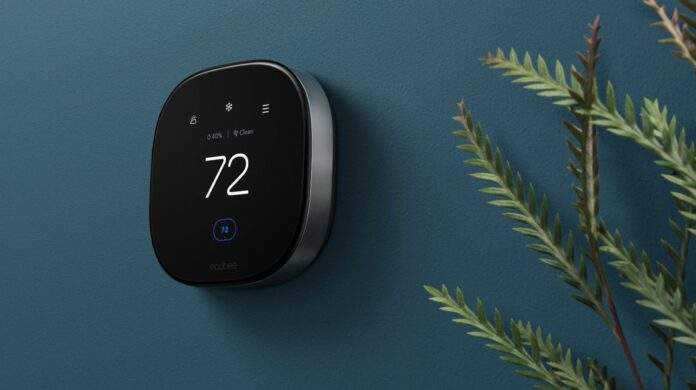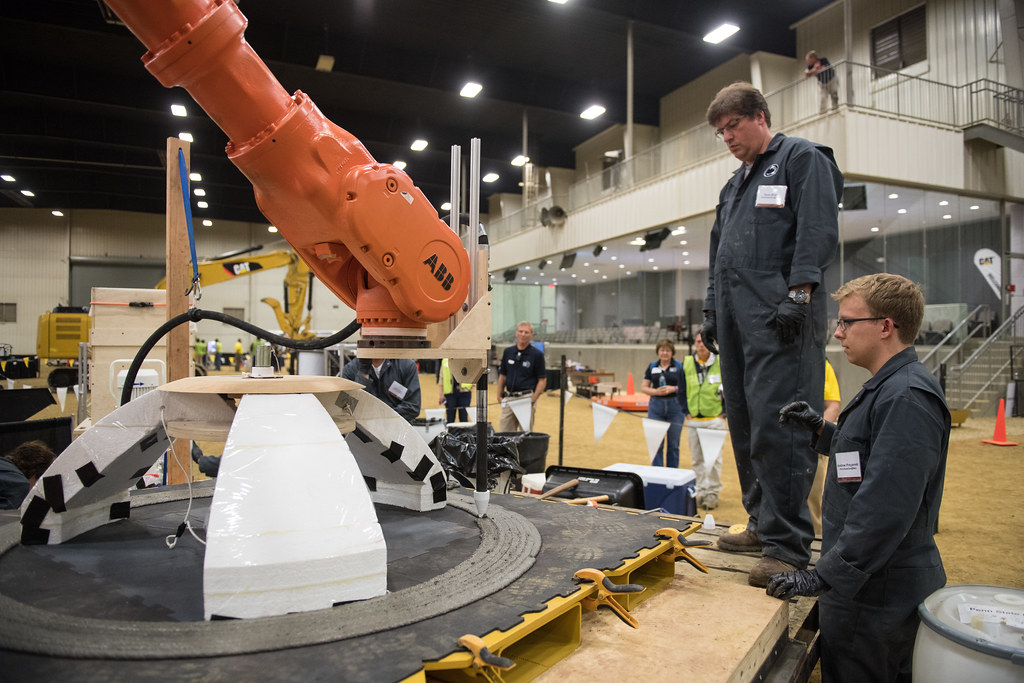Upgrading to a smart thermostat is great, but if you don’t use all the features, you’re leaving a ton of benefits on the table. Make sure you’re taking full advantage of these smart thermostat perks.
Your Thermostat Can’t Do Everything Automatically
A lot of people receive a smart thermostat as a part of their energy rebate or because it came along with newer properties with advanced HVAC systems.
If you didn’t go out of your way to research everything there is to know about smart thermostats and your particular model, you’ve likely overlooked a feature or three. You might have missed some features, even though you researched smart thermostats thoroughly.
You can also read our feature list here. Now is the perfect time to look at your smart thermostat and review its manual. This will allow you to identify the various features, and help you learn. how to These can be used.
Increasingly, many of these great features just happen auto-magically in the background once you’ve installed your thermostat, but many of them require you to either opt-in, toggle a setting, or otherwise enable the feature to realize the full benefits. Don’t assume that a feature is on by default just because it’s advertised as available on your particular smart thermostat.
Smart Scheduling
Two major ways that smart thermostats can make scheduling easier are: First, you can manually create a schedule or multiple schedules. it’s so much easier to do so with the app or web interface than it used to be with clunky old programmable thermostats.
There were many times when I used to hunch over an old-fashioned thermostat, clicking little buttons to create a program. With the app, it’s trivial to set a schedule and trivial to change the schedule if the need arises.
Many smart thermostats are smart enough to adapt to changing patterns in your house. The thermostat learns your schedule and adapts accordingly.
Keep reading to learn more about how you can make the smart thermostat work better and the smart scheduling function even better.
Allow Smart Home Integration
We’re slowly moving towards a future where all the different smart devices and sensors in our homes work together in a useful manner. Install the app to get the best out of your smart thermostat. Set up all necessary accounts and connect your thermostat to the smart home.
Doing so opens up a world of possibilities from the simple—like controlling your thermostat from a smart display in your kitchen—to the more advanced—like integrating your smart thermostat into more complex routines with IFTTT routines.
With the imminent rollout and standardization of Matter, smart thermostats will be a key component in this new ecosystem-of-sensors home.
Enjoy the Away Mode

It is very similar to smart scheduling. One of the downsides of set schedules and old-fashioned programmable thermostats is that, while they were an improvement over never adjusting the thermostat, they weren’t adaptive.
Smart thermostats are an adaptive system in which the temperature and humidity of your home can be adjusted based upon the presence or absence of people.
It might not seem like a big deal, but let’s take a simple example. Let’s say, with an old programmable thermostat, you set the temperatures for Saturday and Sunday to be very comfortable in the middle of the day because you anticipate being home on the weekend.
You would forget to turn on the thermostat each time you went somewhere Saturday afternoon. It’s unlikely. Your smart thermostat will adjust automatically if it senses that your home is empty. You don’t need to input anything.
Most thermostats with this feature have a motion sensor integrated into their front. Other thermostats will include smart sensors that provide better coverage (more details in a moment). It is possible to also use geofencing with your smartphone—the smart thermostat will use the presence of your phone to determine if the home is occupied or not.
Use Smart Fan Circulation and Humidity Adjustments
What the features are called varies from brand to brand, but the majority of smart thermostats have a pile of efficiency and comfort functions related to optimizing airflow and humidifying (or dehumidifying) your living space.
Look through the settings for options that run the fan for a period of time after every heating or cooling cycle to help circulate air and even out the temperature in your home.
There are also usually options to hit target dehumidification goals in the summer and humidification goals in the winter to keep your living space comfortable.
Don’t Forget Smart Sensors
Smart sensors aren’t a replacement for an actual multi-zone HVAC system, but they offer enough benefits that it’s worth looking into the smart sensor options for your particular thermostat.
Some sensors function as (and are directly marketed as) temperature and humidity sensors you add on to extend the reach of your thermostat. Several of the Ecobee smart thermostats You can ship with an additional sensor pick up extras To expand the system.
The Ecobee SmartSensors not only monitor the conditions of the room—which is handy if you want to make sure a particular room, like the baby’s nursery, stay comfortable—but also the occupancy of the home for smart home and away modes.
Other situations, however, sensors can be more restricted but still very useful. For example, if you have a Nest thermostat then every Nest smoke detector also serves as an occupancy sensor. If your thermostat is in a lesser-used room it’s incredibly useful to have a sensor somewhere else that gives a more accurate insight into whether or not anybody is home.
In my home, for example, the thermostat is on the wall of the living room and the living room simply isn’t part of the regular flow of traffic. But there’s a sensor near the stairs, a heavily trafficked area, which ensures the away/home state of the thermostat is much more accurate.
Turn On “Feels Like” Temperature Optimization
You might have noticed your favorite weather app or local news station using terms like “Feels Like” or “Real Feel” when describing weather conditions. Those “Feels Like” temperature readings use variables like the actual temperature, the humidity, the wind speed, and the dew point to give you an approximation of what the weather outside actually feels like instead of just the raw temperature reading.
Some smart thermostats have a similar feature, but it works, more or less, in reverse. With the thermostat function you tell it what you want the “Feels Like” to be and it works to adjust the internal temperature and humidity of your home to match your expectation. That way, you get the feeling of 72°F on a pleasant fall day instead of 72°F on a muggy summer day.
Enable Time of Use Power Saving
There are several different approaches to “time of use” power-saving models available with smart thermostats.
Some thermostats, like those in the Ecobee line, offer user-controlled time-of-use saving plans. You can enable a setting that will instruct your smart thermostat to work around the peak energy demands in your location.
For example, your thermostat might supercool your home at night to avoid running the AC when energy costs are at their peak in the middle of the day.
Other thermostats, Ecobee models included, can link to your local utility company for automatic time of use adjustments and even some savings. Many utility companies offer discounted rates or even cash-back rewards for these programs, so that’s worth looking into.
Check Out Energy and Usage Reports

Historically, it was really difficult to track data and statistics about your HVAC system and energy usage. Old thermostats either lacked any tracking metrics at all or, if they had them, you would need to go to the thermostat and poke through menus on a little LCD display to get some basic information of limited utility.
Smart thermostats, however, offer much more sophisticated feedback. Not only do they learn and adapt quietly in the background—you can also look at reports to see if your usage is going up or down. You can also more easily correlate that data with any changes you’ve made around your home.
For example, if you put insulated blackout curtains up or purchased new windowsYou can easily compare energy consumption between different seasons or the past and the current season.
And the reports usually do some basic analysis for you, like displaying the outside temperature and conditions against your energy usage to help you determine if the reason you ran the AC so hard that week was that it was unusually hot or because there’s some issue you need to investigate.
Make use of Reminders and Alarms
When it comes to identifying problems, smart thermostats do a better job than old models at assisting you.
Nest thermostats or thermostats with similar functions can monitor the outcomes of your thermostat and give you an alert if something is not expected. If the thermostat is calling on the AC and running it for X hours per day, for instance, and the temperature of the home is not changing as expected, you’ll get a notice that something is wrong.
Perhaps the issue can be easily resolved (as if your children left some of their toys). windows open,) or maybe it’s more serious (like the coolant line has a leak.)
It is possible to set up alerts for high- and low temperatures, humidity, as well as maintenance reminders. You might as well lean in hard on the whole “better living through technology” aspect of having a smart thermostat and use these features.
Enable Dealer Service Alerts
If your thermostat supports this feature, you’ll be able use it to send you alerts or general warnings.
A few thermostats allow for dealer integration. This allows you to link your thermostat with the HVAC company servicing your system. The system will notify you when there is an issue with your HVAC system and can automatically send the information to your dealer.
Instead of you trying to find the cause or calling a technician to look at the issue in person, they will be able to check the situation remotely. This makes it easier for them to resolve the issue. They can also alert you in advance if there are a number of issues or errors that could indicate a larger problem. An inexpensive repair or replacement is better than spending $1500 for a larger repair.





